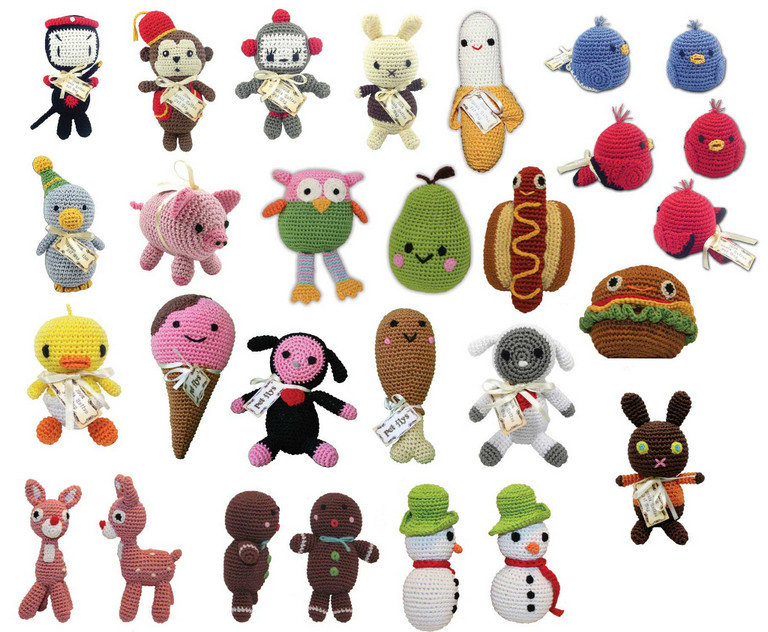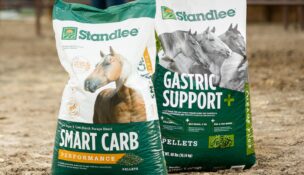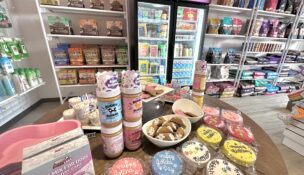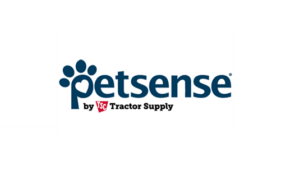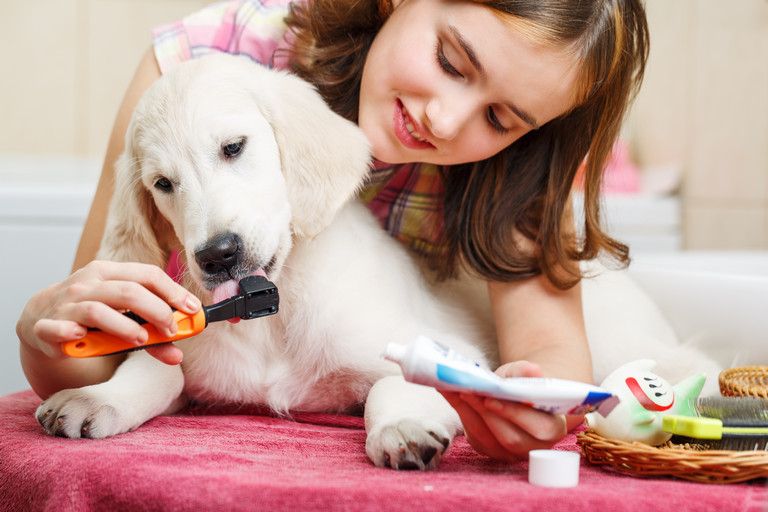Sourced From Nature
Pet Age Staff //July 8, 2013//
There’s a reason why people refer to their pets as fur babies in online forums and even everyday conversation. These lovable creatures are as much a part of the family as kids for most people.
Therefore, pet owners are likely to pay as much attention to what’s going into their new puppy’s mouth as they would to what is going into their baby’s mouth, and that translates into buying organic.
According to a recent survey from the Organic Trade Association, 8 in 10 parents report purchasing organic products. While the research wasn’t conducted on pet owners as well, there’s no denying that the organic market is growing overall.
Whether it’s food, clothes or toys, people are paying more attention to what their pets eat, play with and just come into contact with on a daily basis. Total organic sales were up almost 10 percent in 2010, according to the OTA.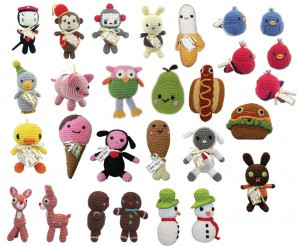
Organic and all-natural toys are an important category for retailers to pay attention to. After all, it’s not just food that gets into a pets’ systems. The toys they carry around and chew on often get ingested, too.
“Our pets are like the canary in the coal mine,” Pam Wheelock, owner of Purrfect Play, said. “They’re on the ground, walking on Teflon, people are petting them with lotions and perfumes on their hands, they’re coming into contact with chemicals constantly.”
Because of this, many manufacturers have turned to making toys out of organic and all-natural materials to help reduce the amount of harmful chemicals our pets are exposed to in their lifetimes.
“For me, it’s all about the raw materials and starting out with good quality,” Carol Perkins, owner of Harry Barker, said. “It might be more challenging finding the materials, but making sustainable products is just inherent in my DNA, and I think the challenge is part of the fun.”
Fabric of Our Lives
Whether it’s organic cotton or hemp grown without the use of pesticides or chemicals, the basic elements of squeaky and rope toys can be found for manufacturers of organic and all-natural toys.
Harry Barker has been selling hemp toys since Perkins started making the first simple bone on her kitchen table.
“I love hemp because it’s mildew resistant and anti-fungal, and it’s a tough, sturdy material,” Perkins said.
While the rope is a classic for this company, they’re always introducing new designs. The latest is the seaside collection, with alligators, starfish and seahorses. Purrfect Play also has two new lines of hemp toys hitting the market this summer. A carrot shape filled with organic catnip is designed to appeal to cats.
Organic cotton lends itself to soft plush toys, great for smaller dogs that like to carry their toys around. PetFlys, out of Burbank, Calif., produces a line of toys called Knit Knacks that are hand-crocheted from organic cotton. Whether you prefer animals or cartoon characters, there’s something for everyone with 25 different colorful shapes to choose from.
“The great thing about these toys is they are soft enough to appeal to pets, but the threads are tough enough to be long lasting and make excellent natural tooth cleaners,” said Jana Ritter, marketing director of PetFlys.
Wool also makes a great material for creating dog toys.
A Cheerful Pet in Norma, N.J., produces products made from 100 percent all-natural wool from New Zealand. The boiled wool is molded into shapes including rings, balls, animals and bones, and appeal to both cats and dogs.
Making It Appealing
While there are some people who are already seeking out organic toys, many consumers just come into the store looking for something to entertain their pets.
“At the end of the day, while healthy choices are important, how a product is presented to the customer is probably even more important at getting sales,” Jean Chae, director of product development and sales at Simply Fido, in Brooklyn, N.Y., said.
Chae’s family has been in the toy business for over 40 years. About 10 years ago, after her mother won a battle with cancer, they changed their production to make only organic toys. It was only natural to launch an organic line for pets.
“Pets are our family too, and if we want good products for our children, we want the same for our pets,” Chae said.
At Simply Fido they work really hard to make designs that are visually appealing, with soft, plush animals and bones. They use dyes that have a low environmental impact, and the toys are made with the same process used for dying baby clothes.
“We pay a lot of attention to details in our design,” Chae said.
Getting Into Rubber
Many rubber pet toys are a synthetic material made with a petro-chemical process. Rubber pet toys are the fastest growing type of toy, showing an 11 percent growth rate from 2008 to 2010, according to the American Pet Products Association survey.
This growth hasn’t been lost on manufacturers of all-natural toys. Both Simply Fido and Harry Barker are coming out with lines of rubber toys this summer.
“We wanted to do something new, so after looking around and doing our research, we found that people love rubber toys,” Chae said. “Ours will be 100 percent pure rubber toys with no additives. You won’t get that white powder residue on your hands that you get from rubber with additives.”
Harry Barker’s rubber toys were inspired by Perkins’s recent trip to France. After falling in love with the tassel shape on the key bob for her hotel room, she decided to use that same design for a toy that you can stuff.
“I’m excited to be launching into the rubber world,” Perkins said.
Her toys will be 72 percent natural rubber, and the rest of the compounds are natural as well.
“It’s the highest content we found to be effective,” she said. “It’s durable, tossable, tuggable and stuffable.”
Making the Sale
As with any product, educating yourself and your sales staff on the materials and benefits of organic and all-natural toys is key to helping them fly off the shelf.
“Once people are educated and know the benefits of these natural materials free of harmful chemicals, they’re more likely to spend a little more,” Halle Kearns, vice president of sales for Harry Barker, said.
Merchandising is important as well. Many manufacturers provide creative displays to help sell their products, from a coconut shell full of hemp carrots from Purrfect Play to an egg carton stuffed with KnitKnacks from Pet Flys.
Use creative placement in the store to get these products in front of customers as well. Putting a display of organic toys next to your organic dog food will help customers realize that it’s not just food going in their dog’s mouth, and these toys are a great way to continue the healthy, environmentally friendly values through to a new product category.
– Karen M. Alley
